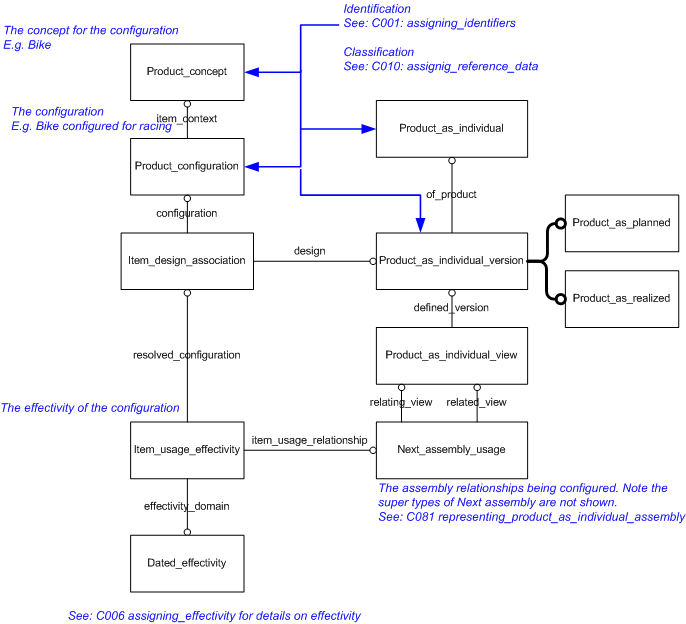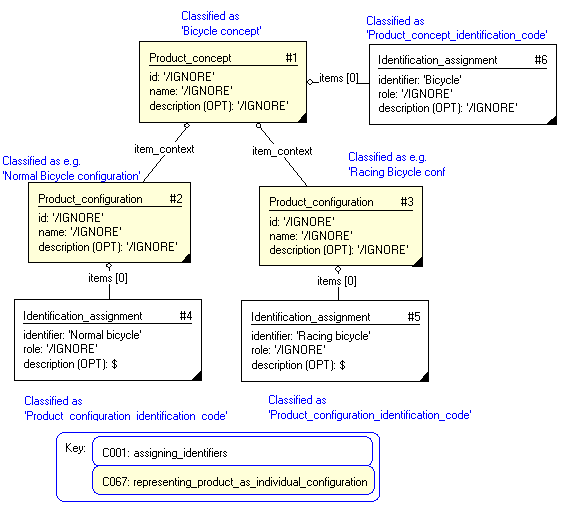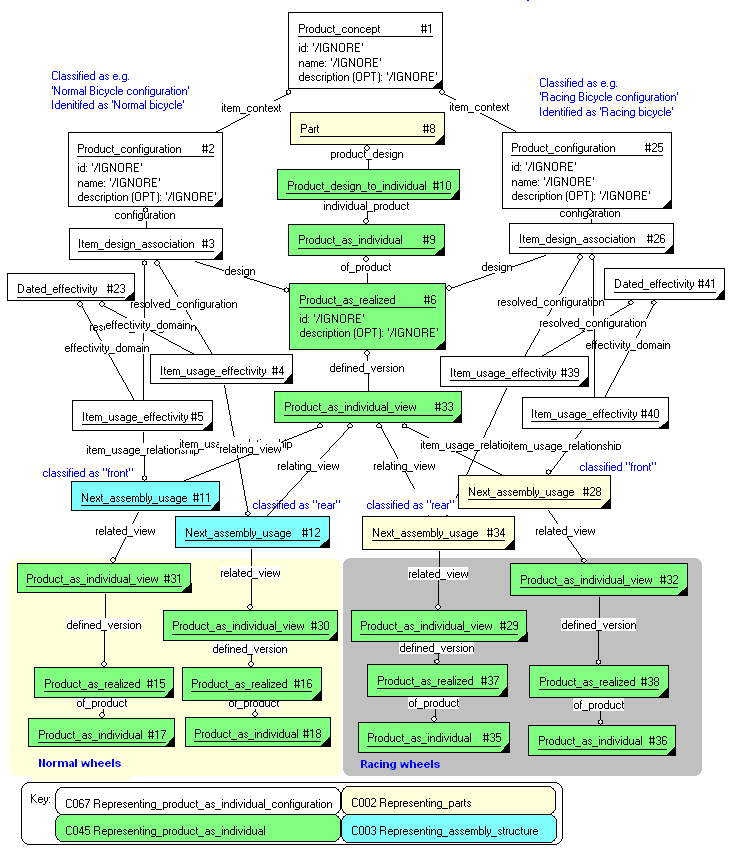
| Capability (C067):— representing_product_as_individual_configuration | Date: 2007/07/11 16:32:00 Revision: 1.11 |
Complex products can often be configured to perform different roles or configured with different options. For example, a bicycle can be configured with normal road wheels or with alloy racing wheels.
This capability describes how the different configurations that may be in use at any one time can be represented.
The information required to represent a configuration of an actual product (a Product_as_realized) is summarized in the EXPRESS-G diagram in Figure 1 below and described in the following sections.
NOTE The EXPRESS-G is not complete. For the complete EXPRESS see the modules: Identification assignment, Configuration effectivity, Configuration item, Product as individual, Assembly structure. Furthermore, the EXPRESS-G is an abstraction of the model. Some attributes are missing and some that are inherited from supertypes are shown on the subtype for clarity.

When a product is designed, it is first represented as a Product_concept. For example, a new bicycle will be initially represented as a Product_concept. Then a number of possible configurations of the product are identified and represented by a Product_configuration. For example, there may be two product configurations of the bicycle concept. An ordinary bike, then a racing bicycle fitted with racing wheels.
The configuration is identified by using Identification_assignment (as described in the capability C001: assigning_identifiers) to assign an identifier to the Product_concept and the Product_configuration. In order to distinguish the identifiers they are classified using "Product concept identification code" (urn:plcs:rdl:std:Product concept identification code) and "Product configuration identification code" (urn:plcs:rdl:std:Product configuration identification code) respectively. In addition, the types of the Product_concept and Product_configuration are represented by classifying them. There is no standard reference data as it is product specific.
The bicycle example is shown in Figure 2. This shows the "PLCS_Bike" as a product concept, with two possible role configurations - as normal bicycle and as a racing bicycle.

Once the product has been manufactured it will be represented by an assembly structure (represented by Product_as_individual and associated Product_as_realized ) that can be configured in different configuration options. The configuration, represented by Product_configuration, is related to the Product_as_realized by Item_design_association.
The assembly structure represents all possible assemblies. These are represented by instances of Next_assembly_usage relating the views Product_as_individual_view) of the components of the bicycle (instances of Product_as_realized).
The configuration of the product at any given time is determined by the use of Dated_effectivity, which indicates the time interval, and Item_usage_effectivity which applies the effectivity to an assembly relationship (Next_assembly_usage).
Figure 3 shows an example of a bicycle that over time has been configured in a particular way.
NOTE To simplify the diagram, the identification and classification of Product_concept, Product_configuration has not been shown. The same approach as in Figure 2 is used.

This capability "Representing product as individual configuration" is related to the following capabilities:
This capability "Representing product as individual configuration" is dependent on the following capabilities:
The following classes of reference data are required for this capability:
© OASIS 2010 — All rights reserved